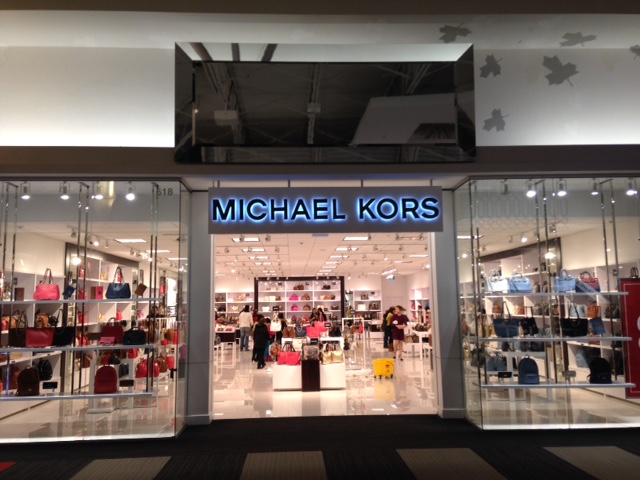 Michael Kors is a global luxury lifestyle brand which focuses mainly on luxury accessories, footwear, and apparel. The company mainly operates stores in North America, Europe, and Asia, both directly and through licensing partners. Michael Kors generates revenues through three operating segments: retail, wholesale and licensing. Retail accounts form a majority of the revenue, with wholesale not far behind. At the end of December 2015, the company operated 623 retail stores (including concessions) in three main geographical segments. This was an increase of 22.4% over the same period in the prior year.
Michael Kors is a global luxury lifestyle brand which focuses mainly on luxury accessories, footwear, and apparel. The company mainly operates stores in North America, Europe, and Asia, both directly and through licensing partners. Michael Kors generates revenues through three operating segments: retail, wholesale and licensing. Retail accounts form a majority of the revenue, with wholesale not far behind. At the end of December 2015, the company operated 623 retail stores (including concessions) in three main geographical segments. This was an increase of 22.4% over the same period in the prior year.
Michael Kors Holdings Limited (KORS)
Performance
52-week high ($68.82) / 52-week low ($34.83) / Current Price ($56.27)
In the third quarter of this fiscal year, KORS revenue was up from $1.31 billion to $1.40 billion, and its diluted EPS was up from $1.48 to $1.59 compared to last year. The reported revenue for the last year was $4.37 billion and diluted EPS was $4.28. At the current price, the P/E of the stock is 12.98 compared to 27.3X for the Textile-Apparel clothing industry, suggesting that, although the stock has run up following the results announcement, it is still relatively inexpensive. On average, analysts expect earnings to grow by 8.99% over the next five years; however, the growth targets for this year and next year are muted at 3.31% and 2.36% respectively. The company has a healthy debt equity ratio of 0.2 (20%), which is a big positive.
Growth Likely to Moderate Going Forward
After the company went public, it enjoyed exponential growth until the last fiscal year. During that period, revenue increased from $2.18 billion in fiscal year 2013 to $4.37 billion in fiscal year 2015. During the same period, the company experienced EPS growth of 152% for 2013, 62% for 2014, and 33% for 2015. However, it is highly unlikely that these high growth rates will be sustainable in the long term, and Michael Kors’ growth rate will likely moderate in the coming years.
Its overall quarterly revenue rose 6.3% compared to 32% growth in the same quarter of last year. Operating profit margins and net profit margins have come in at 29.3% and 21.8% respectively, which is an improvement over the September quarter.
With growth declining, investors are concerned that mass marketing initiatives may have dented Michael Kors’ premium luxury brand status. Moreover, products being pushed by offering discounts don’t appear to be gaining enough traction. Same store sales decreased 5.6% in the December quarter. The stock price is down 16.3% over the past one year; however, it has returned a handsome 40% YTD as investors cheered the better-than-expected third quarter results. In an industry where consumer tastes are fickle, often changing from one fashion season to the next, stock prices can swing wildly. Entry barriers are often quite low; as such, competition is likely to increase further, creating challenges to the company in maintaining its margins and growing sales.
The company is also facing headwinds due to foreign exchange losses. In the current quarter, foreign exchange losses impacted the earnings by $0.06 per share. The dollar continues to be volatile, gyrating wildly on the central bank announcements. Although a lesser concern, rising interest burden on consumers could dampen the demand for luxury goods going forward, due to less disposable income in their hands. However, given the deflationary state of the global economy, this is not much of a worry.
The company had lowered its earnings and revenue guidance for the third quarter of this fiscal year and also for the full year. However, third quarter revenue came in better than expected at $1.4 billion against the guided range of $1.33 to $1.35 billion, and the EPS also beat expectations at $1.59 against an expectation of $1.44 to $1.48. The company has maintained its full-year revenue guidance at $4.6 to $4.65 billion and EPS between $4.38 to $4.42.
The better-than-expected result is primarily driven by e-commerce sales and the net increased store count of 114 stores. On both fronts management’s actions are producing the desired results. The accessories and footwear segments showed good traction among consumers and the international business continued to grow exponentially.
Management Focused on E-commerce and Global Growth
Management has continued to focus on its e-commerce business, offering a seamless omni-channel experience to its clients, build-out of the men’s business and global growth. Management is positive about its spring collection, which if successful, should underscore the company’s leadership position in the fashion industry.
During the quarter, the company repurchased 4,682,121 shares from the open market, amounting to approximately $200 million. The amount remaining for further share repurchase was $558.1 million as of December 26, 2016.
Conclusion
The luxury accessory business is very lucrative, which has encouraged competitors to enter the space. Nevertheless, management has succeeded in leveraging its brand name and has provided an omni-channel experience, which has appealed to customers. Although the stock doesn’t offer the valuation comfort it did before the announcement of the results, it is still trading at a discount to the average of the Textile-Apparel clothing industry. As analysts expect strong long-term growth, investors can utilize dips in the stock to buy, keeping a long-term view on the stock. As always, be sure to conduct a thorough analysis before making any investment decision and invest with a long-term view.

